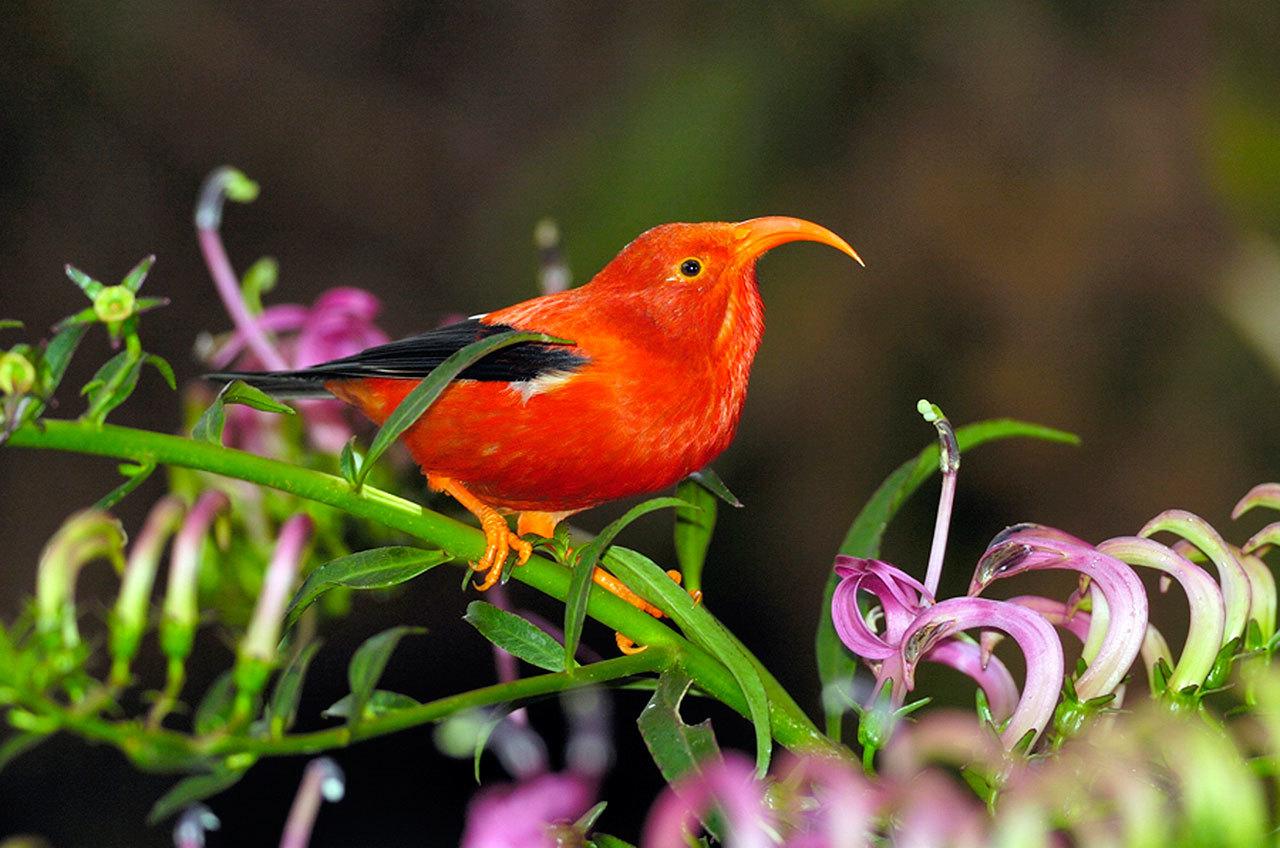By Chelsea Harvey
The Washington Post.
Some of Hawaii’s most iconic birds are experiencing dangerous declines — and a combination of mosquitoes and climate change seems to be the culprit.
A study published Wednesday in the journal Science Advances suggests that mosquito-borne diseases, including avian malaria, have helped cause rapid declines in nearly all the native bird species on the Hawaiian island of Kaua’i. The researchers suggest that rising temperatures have allowed mosquitoes to expand into the birds’ high-elevation ranges, which were once too cool for them to tolerate — and as temperatures continue to heat up on the island, the situation will likely only worsen.
The study focuses on eight bird species native to Kaua’i, all of which are found only in the Hawaiian islands. Six of these species belong to a group of birds known as “honeycreepers” — a colorful and diverse group that has existed on the Hawaiian archipelago for millions of years. While there were once dozens of honeycreeper species found throughout the islands, more than half of them have gone extinct as a result of habitat degradation, invasive species and disease.
The other two species included in the study were a rare species of thrush and a type of bird known as a monarch flycatcher.
All of these species tend to be found at high elevations on the island, explained Eben Paxton , an avian ecologist with the U.S. Geological Survey’s Pacific Island Ecosystems Research Center and the new study’s lead author. This is typical of Hawaiian forest birds in general. The farther the birds go up the islands’ mountains and plateaus, the more protected they are from habitat destruction, invasive predators and non-native birds that might compete with them for resources at lower elevations.
Higher elevations are also cooler, and therefore less conducive to mosquitoes and the diseases they carry. Native Hawaiian birds — particularly the honeycreepers — tend to be highly susceptible to avian malaria, which arrived on the islands only in recent history, long after the birds had evolved there. It’s believed that mosquitoes were first carried to Hawaii some time in the mid-1800s, and diseases like the malaria and avian pox began showing up afterward.
Conservationists believe that mosquito-borne diseases now pose a major threat to the honeycreepers’ future. And the new study helps confirm those fears.
The researchers used survey data to assess changes in the birds’ populations over the past three decades. They found that all of the honeycreeper species had experienced rapid declines throughout their ranges — by up to 94 percent at the edges of their ranges and up to 68 percent in the core areas. The flycatcher, on the other hand, exhibited mixed trends — decreasing around the outer parts of its range and increasing substantially toward the core areas of its territory. There was not enough data on the rare thrush to make an adequate assessment of its population changes.
While the researchers believe many factors are likely contributing to the birds’ declines, the results make a good case for the idea that disease is one of the biggest culprits. Threats such as predators or competing bird species tend to be most pronounced around the peripheries of the native birds’ ranges. But the honeycreepers exhibited marked declines throughout their ranges, not just at the edges.
Furthermore, the fact the honeycreepers had experienced the worst declines, while the monarch flycatcher was in comparatively better shape, was also telling, according to Paxton. Previous research has suggested that the flycatcher is less susceptible to malaria than the honeycreepers.
The researchers believe climate change has played a key role in the growing influence of mosquito-borne diseases. Research has suggested that the prevalence of avian malaria in the upper elevations of Kaua’i has more than doubled since the 1990s, and that this increase has corresponded with climatic changes in the area.
“Naturalists working up in the Kaua’i mountains very rarely ever saw mosquitoes, even despite extensive searches for [them],” Paxton noted. “And just in the last five to six years, researchers that are working up in those mountains are now seeing mosquitoes commonly.”
The researchers worry that if action isn’t taken soon, continued declines could lead to the extinction of these native birds. Two species in particular — the ‘akikiki and the ‘akeke’e — currently pose a special concern, with fewer than a thousand individuals left of each.
“We feel like in the next five to 10 years, those species will go extinct without major intervention,” Paxton said. And the other honeycreepers may not be far behind.
As a result, mosquito control efforts are among the biggest priorities for conservationists. These can include traditional control methods, such as eliminating standing water, as well as more cutting-edge techniques, such as releasing genetically modified mosquitoes that cause populations to die back over time. It’s a technique that’s currently being applied in places like Brazil to combat Zika.
Additionally, tackling some of the other factors affecting the bird — cracking down on invasive species, like rats, for instance, which prey on the birds’ nests — could also help slow the declines, Paxton added.
The most important point is that action is needed quickly. The study demonstrates the unusually powerful impact of climate change on island ecosystems, showing how quickly these isolated species can be affected if strong measures aren’t taken to prevent them.
“If we do nothing, then we will lose most of these species,” Paxton said. “So it’s really important that we as a country, as a society, come up with a strategy that we agree on to move forward against extinction.”
Talk to us
> Give us your news tips.
> Send us a letter to the editor.
> More Herald contact information.

























